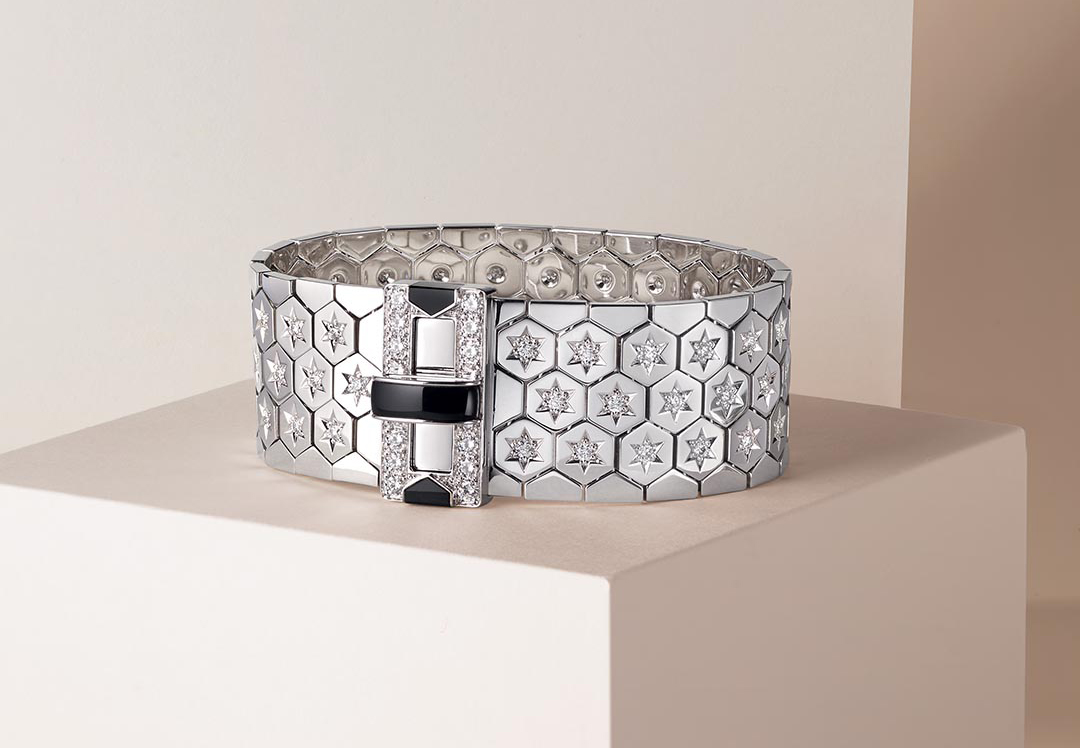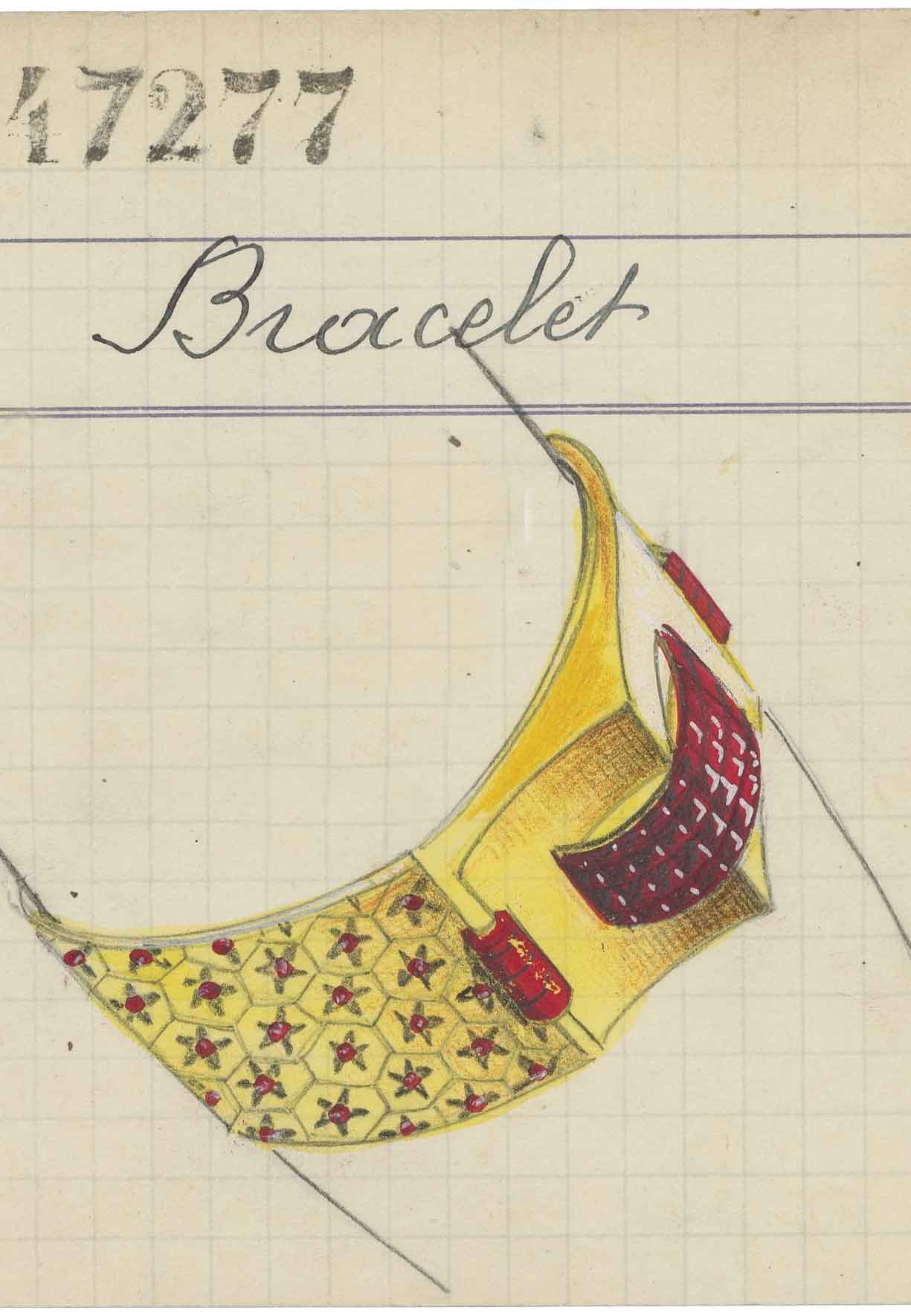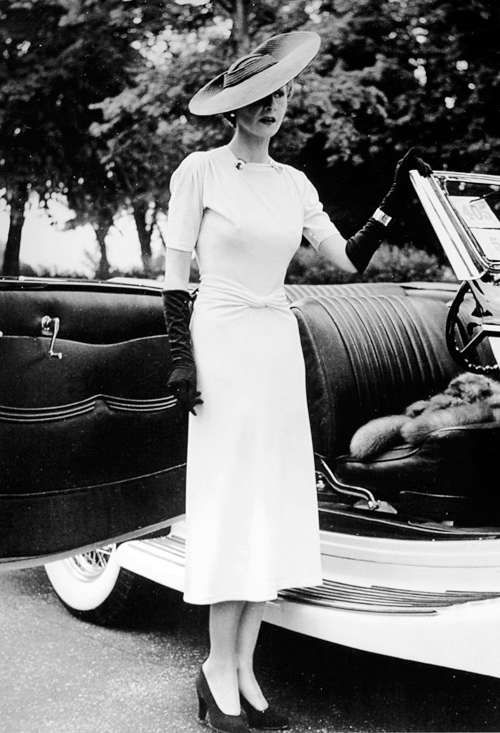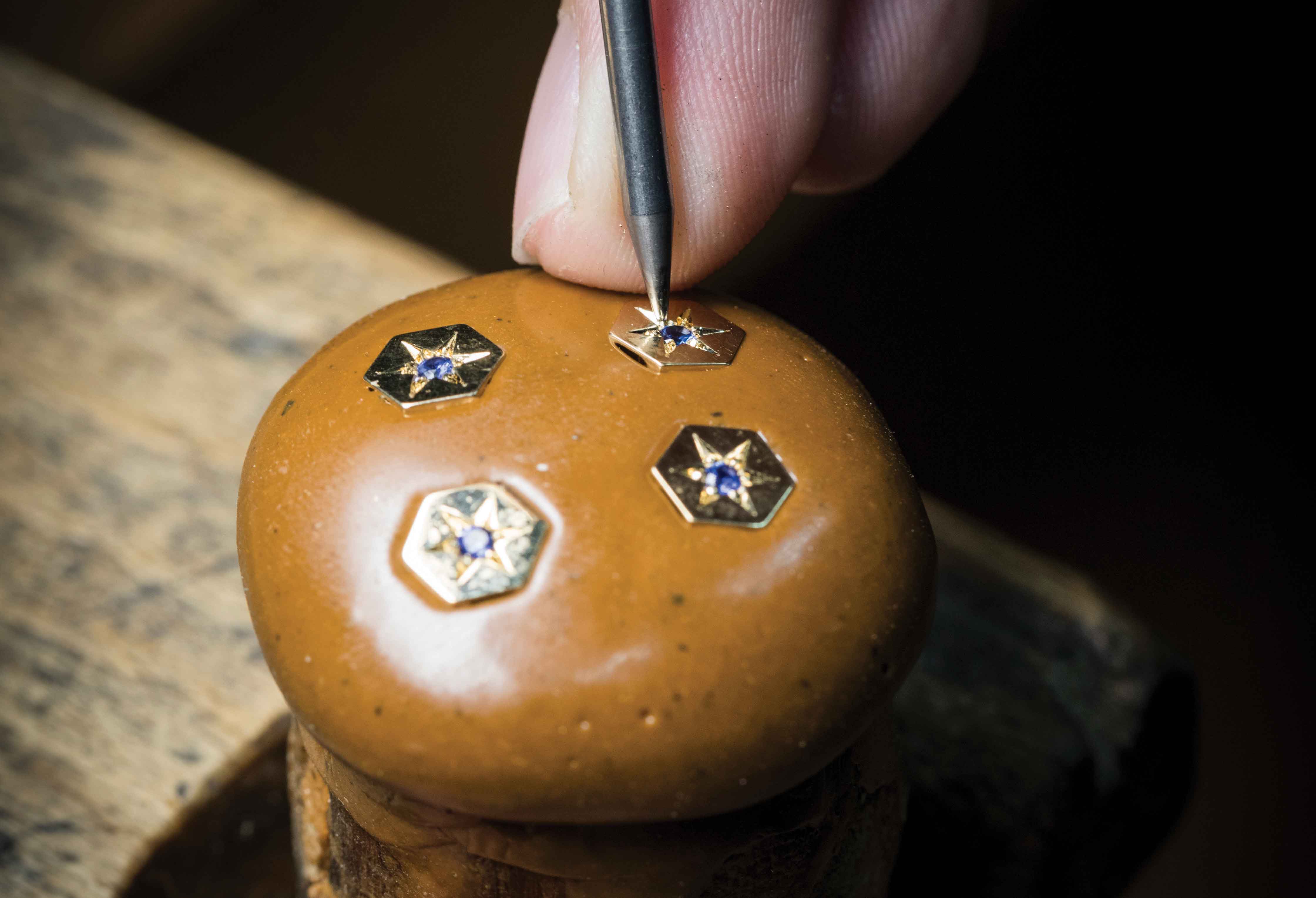Seventy years after it was discontinued, the Ludo bracelet makes its return this year. Van Cleef & Arpels is slated to revive its icon from the 1930s with its own collection, which comprises four launches: one design that features a brick-pattern mesh similar to the one that debuted in the 1934 Ludo Briquettes bracelet, and three designs that maintain the honeycomb mesh first seen in the 1935 Ludo Hexagone bracelet.
The pieces sporting the hexagonal links are in yellow gold set with sapphires, turquoise, lapis lazuli and diamonds; in pink gold set with rubies, coral and diamonds; and in white gold set with onyx and diamonds. The piece featuring the brick-pattern mesh is in yellow gold and white gold and set with diamonds.
Inspired by the belt, a popular accessory in the 1930s, and built on the geometric forms that were well-loved motifs during the art deco period, the Ludo bracelet is made up of a flexible mesh of hexagonal or rectangular links and a clasp designed as a stylized belt buckle. Its graceful, fluid lines and supple, fabric-like expression are due to the articulated ribbon of interconnected elements assembled and adjusted individually to ensure maximum flexibility.
 Ludo bracelet in white gold set with onyx and diamonds
Ludo bracelet in white gold set with onyx and diamonds
The metal surfaces are polished by hand to enhance brilliance and sheen, and hexagonal links are embellished with precious stones in a star setting. Star setting involves Les Mains d’Or, the maison’s master craftsmen and expert jewelers, hand-engraving each link with a six-point star and securing a gemstone at its center with metal grains.
Since its first appearance, the Ludo bracelet has been revisited and reinterpreted many times, resulting in hexagon-based bracelets created in 1937 and 1939 in platinum, gold, sapphires, Mystery Set sapphires and diamonds; and gold, rubies and Mystery Set rubies, respectively; and a brick-pattern bracelet from 1935 in gold with ruby, enamel and diamonds. Ludo’s design has also inspired matching earclips and rings.
- A PIECE OF HISTORY
- CREATIVE PRECISION
A piece of history
The Ludo bracelet was created in 1934, with the brick-pattern style being the first to appear, in the form of the Briquettes bracelet; the Ludo Hexagone bracelet was introduced next, in 1935, and remained in production until around 1950.
The range took its name from the nickname borne by Louis Arpels, the youngest of the Arpels brothers who co-founded Van Cleef & Arpels, described in his 1976 New York Times obituary as “a super salesman … He was handsome, beautifully dressed, had a sense of humor and exquisite taste. He had sort of jaunty charm — the kind of Frenchman Maurice Chevalier was. Customers loved him.”
 A product card showing a Ludo Hexagone bracelet from 1937. Source: Van Cleef & Arpels archives
A product card showing a Ludo Hexagone bracelet from 1937. Source: Van Cleef & Arpels archives
Louis was one half of the glamorous, charismatic couple who moved to New York from France after the end of World War II to establish Van Cleef & Arpels’ operations in the city: Hélène Ostrowska, Louis’s wife from 1933 to 1968, was a fashion model and socialite whose standing and visibility skyrocketed with the relocation. A regular on best-dressed lists for a solid decade beginning in 1949, the statuesque Hélène often posed for photos wearing the Ludo bracelet clasped over long sleeves or black gloves, a look that accentuated the jewel’s linear qualities.
 Hélène Arpels (née Ostrowska), wife of jeweler Louis Arpels, 1937. Source: Pintrest
Hélène Arpels (née Ostrowska), wife of jeweler Louis Arpels, 1937. Source: Pintrest
The Ludo bracelet drew admirers from society’s elite: Woolworth heiress Barbara Hutton purchased a 1935 Ludo Briquettes bracelet in platinum set with diamonds, a unique piece unusual at a time when jewelry in yellow gold was more common.
The Ludo bracelet is just one of Van Cleef & Arpels’ creations that demonstrate the maison’s legacy of connecting the worlds of jewelry and haute couture: Archival sketches and past jewelry pieces from the house depict design elements inspired by ribbons, bows, zippers, trompe l’oeil buttons, collarettes and tulle.
- A PIECE OF HISTORY
- CREATIVE PRECISION
Creative precision
The crafting process for the Ludo bracelet includes stages such as shaping the metal structures and polishing them, and setting selected gemstones.
The maison’s Mains d’Or employ a range of technically demanding skills, polishing and buffing the metal surfaces with abrasive pastes and wires, brushes and soapy solutions to make them shine (with this process repeated at numerous stages throughout the production, any time another craftsman works on the same piece); and removing metal from around each gemstone using a burin and shaping the resultant grains into round, polished beads that encircle the gemstone and hold it in place on the hexagonal link.

A technique that has been employed in Ludo bracelets of the past is Van Cleef & Arpels’ patented Mystery Setting, which places colored gemstones, especially rubies and sapphires, in such close proximity that the underlying metal holding them in place seems to disappear. The gemstone cutter spends 90 minutes to two hours shaping each stone and cutting two fine tracks into it, along which the gem is slid into a metal bezel bearing casings fashioned from wires 0.2mm thick.







 Ludo bracelet in white gold set with onyx and diamonds
Ludo bracelet in white gold set with onyx and diamonds
 A product card showing a Ludo Hexagone bracelet from 1937. Source: Van Cleef & Arpels archives
A product card showing a Ludo Hexagone bracelet from 1937. Source: Van Cleef & Arpels archives
 Hélène Arpels (née Ostrowska), wife of jeweler Louis Arpels, 1937. Source: Pintrest
Hélène Arpels (née Ostrowska), wife of jeweler Louis Arpels, 1937. Source: Pintrest




-NAC Facade L2.jpg&w=500&h=550&crop-to-fit)
 Back
Back
